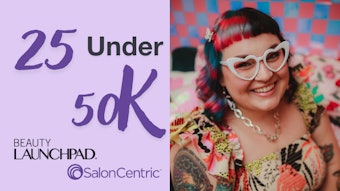
The most fundamental and profitable work I do as a licensed beauty professional involves interacting directly with salon clients. In providing services, I use the same types of products available when I first entered the industry 30 years ago. Although reformulations, discontinuations and price increases happen, the continuity of these products has rarely been disrupted. It’s remarkable how little has changed.
The same cannot be said for the technology to conduct business. Almost everything has changed with few exceptions: the landline phone number works with voicemail (though no longer with an answering machine) and Quicken tracks my finances. I would list other exceptions, but at the moment nothing else comes to mind. That’s how differently I manage my salon responsibilities now compared to the early years.
The technologies that beauty pros use demonstrate either how much progress or disruption our industry has experienced, depending on your perspective.
For a person like myself who values both efficiency and consistency, many of the technological advancements leave me ambivalent. Scheduling clients provides the perfect example. In simpler times, I used a paper appointment book, as many pros of a certain age will recall doing. What choice did we have? Besides, daily planners were all the rage even though they date back to 1773! While appointment books serve a purpose, they certainly aren’t foolproof as anyone who’s lost their book or failed to add/delete an appointment knows.
When I transitioned to salon software more than 20 years ago, that investment marked a significant development in my professional career. Even working alone, I anticipated expanding my business and having employees, a milestone achieved in 2005. All these years later, I can hardly imagine running a salon without software; it’s become normalized within our industry. As an early adopter, I encouraged others to give up appointment books as inefficient relics of the past. And yet, some pros still rely on them. Their reluctance to move to digital scheduling illustrates this truism: how we view and utilize technology reflects our individual priorities, and our priorities change with our circumstances.
Speaking of circumstances, I never imagined not being able to provide services until the coronavirus pandemic started last year. Losing the most important aspect of my profession during three extended shutdowns has shifted my priorities and perspective. Paying for technology services while not generating income gave me time and incentive to review all those expenses. How does the technology serve my purpose? What problems does it solve or create? What education and customer support are available? How much does it cost?
With every new project or expansion of your business, you should expect to encounter unfamiliar technology. In my work as co-host of Outgrowth: A Slice of Pro Beauty, I’ve learned about what’s required to produce a podcast, with every step in the process – recording, editing, transcribing, hosting and promoting – making use of a different application. It’s complicated and wouldn’t be possible without the hard work of my co-host, Ashley Gregory Hackett. Of course, some companies offer to do everything, but we prefer the flexibility of choosing apps based on their performance for a particular function.
In a past article about technology, I described my lack of video content:
What’s missing in my repertoire is the capability to produce quality videos. Capability may not be the right word; I think I’m capable, I just haven’t been willing apparently. Despite the time and effort I invest in researching articles and presenting classes, the question often arises: “Do you have a video for that?” No, but thanks for asking. If producing videos were a priority, they’d exist already.
Reading this makes me laugh because, in exactly seven years since writing that article, I posted only one video. Apparently, I wasn’t willing to do more until beauty shows went virtual and organizers requested pre-recorded classes. The functionality of the podcast apps contributed to my recent video projects, but the process was stressful. If not for deadlines, I might still be trying to perfect the editing. As I wrote in that article, “At some point, I need to be confident that whatever I’ve created is ready to share. Until then, I can procrastinate in pursuit of perfection.”
For all the promises of time-savings and convenience, how do we decide what technology to adopt, what to ignore and what to abandon?
The pressure to engage in social media, produce content, launch products and extend ourselves beyond providing services has become overwhelming. Whether it’s the fear of missing out, or being perceived as less competent, have we surrendered to an illusion of the ultimate beauty pro? If so, I can’t help but feel trapped by technology, and somewhat nostalgic for a time when providing quality services was the most important and best use of our resources.











